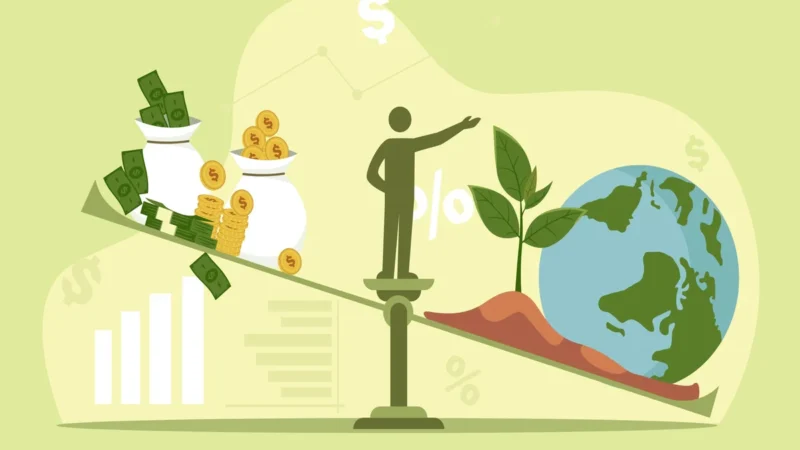Circular Economy and Waste Reduction: Sustainability in Food Production

The global food industry faces significant challenges in the 21st century, including the need to meet growing food demands while minimizing its environmental footprint. Circular economy principles offer a promising solution by emphasizing resource efficiency, waste reduction, and sustainable practices throughout the food production cycle. This article delves into the concept of circular economy, its role in waste reduction, and its potential to enhance sustainability in food production.
1.Circular Economy in Food Production:
Circular economy is a holistic approach aimed at minimizing waste generation and maximizing resource utilization through the creation of closed-loop systems. In the context of food production, this involves designing processes and systems that minimize waste at every stage of the value chain, from farming and processing to distribution and consumption. Circular economy principles encourage reusing, repurposing, and recycling materials and resources to create a regenerative system that minimizes environmental impact.
2.The Problem of Food Waste:
Food waste is a pressing concern, accounting for a significant portion of global waste. In traditional linear systems, food is produced, consumed, and discarded, leading to immense resource depletion and environmental degradation. Circular economy strategies challenge this model by seeking to eliminate or reduce waste at its source, promoting the efficient use of resources and the redirection of waste back into the production cycle.
3.Closed-Loop Systems in Food Production:
Circular economy principles encourage the implementation of closed-loop systems within the food industry. This entails designing production processes that minimize waste and ensure that any waste generated is repurposed or recycled. For instance, organic waste from food processing can be composted and used as nutrient-rich soil for agriculture, creating a closed-loop nutrient cycle that benefits both food production and the environment.
4.Reducing Packaging Waste:
Packaging waste is a significant contributor to environmental pollution. Circular economy strategies aim to address this issue by promoting reusable, recyclable, and biodegradable packaging materials. By adopting innovative packaging solutions, such as edible packaging or packaging made from agricultural waste, the food industry can contribute to waste reduction and a more sustainable future.
5.Technology and Innovation for Circular Food Systems:
Technological advancements play a pivotal role in realizing circular economy goals within the food industry. Precision agriculture, IoT-enabled supply chains, and data analytics help optimize resource use, reduce overproduction, and minimize food losses. Additionally, innovations like anaerobic digestion can convert organic waste into biogas and fertilizer, offering a sustainable way to manage waste while generating energy.
6.Collaboration and Stakeholder Engagement:
Transitioning to a circular economy requires collaboration across the entire value chain, involving farmers, producers, distributors, retailers, consumers, and policymakers. Stakeholders must work together to implement sustainable practices, share best practices, and create a supportive regulatory environment that incentivizes circular economy strategies.
we can conclude this, Circular economy principles hold immense potential for transforming the food industry into a more sustainable and efficient sector. By embracing waste reduction, resource efficiency, and closed-loop systems, the food industry can mitigate its environmental impact while meeting the growing demands for food. As circular economy practices continue to evolve and gain traction, they offer a pathway towards a more resilient and sustainable future for food production and consumption.
FAQs
1.What is a circular economy in the context of food production?
A circular economy is a concept that focuses on reducing waste and making the most of resources throughout the entire food production process. It’s about creating a system where materials are reused, repurposed, or recycled, instead of being thrown away. This approach aims to minimize the environmental impact of food production while ensuring sustainability.
2.Why is reducing food waste important?
Reducing food waste is crucial because it helps conserve valuable resources like water, energy, and land that are used to produce food. When we waste food, we also waste all the resources that went into producing it. By cutting down on food waste, we can contribute to a more efficient and sustainable food system.
3.How does circular economy help in waste reduction?
Circular economy strategies encourage us to rethink how we produce, package, and consume food. By designing processes that create less waste and finding ways to reuse or recycle materials, we can minimize the amount of waste that ends up in landfills. Circular economy practices also help in creating closed-loop systems where waste becomes a valuable resource for further production.
4.What role does technology play in a circular food system?
Technology plays a big role in making circular food systems possible. Innovations like smart farming, data analytics, and advanced packaging materials help us use resources more efficiently. For example, technology can help farmers grow crops more precisely, reducing overproduction and waste. It can also help track and manage food along the supply chain to minimize losses.
5.How can I contribute to a circular food system?
You can make a difference by being mindful of your food choices and habits. Start by buying only what you need, using leftovers creatively, and properly storing food to prevent spoilage. Support businesses and products that prioritize sustainable practices and packaging. Recycling and composting are also great ways to keep waste out of landfills and contribute to a circular economy.


